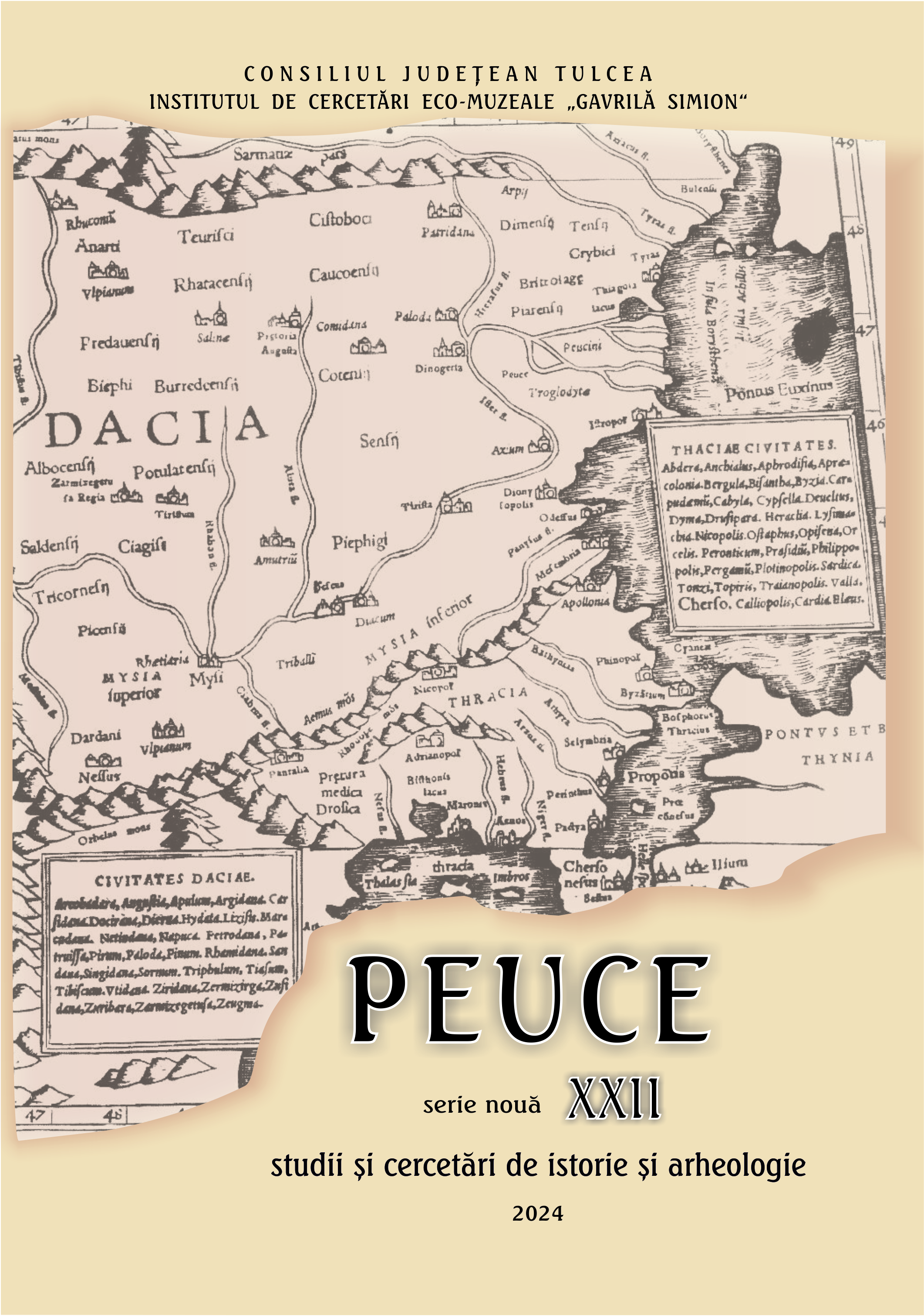Roman Traces in the Fortified Settlement at Beidaud (Tulcea county)
Roman Traces in the Fortified Settlement at Beidaud (Tulcea county)
Author(s): Iulia Iliescu, Radu-Octavian StănescuSubject(s): History
Published by: Institutul de Cercetari Eco-Muzeale Tulcea - Institutul de Istorie si Arheologie
Keywords: Romania; rural settlement; Moesia Inferior; Roman pottery; Beidaud; old excavations; imports;
Summary/Abstract: The case study of the present paper is a series of archaeological materials discovered during the research carried out between 1976 and 1980 in the fortified settlement from the Beidaud Archaeological Microzone. As a result of these campaigns, archaeological features belonging to the Early Iron Age, Archaic and Roman periods were identified. While the prehistoric and Archaic finds have been discussed extensively in several studies, the archaeological complexes and materials belonging to the Roman period have been treated only tangentially, consisting of brief mentions of their discovery. In this context, we aim to make use of this assemblage of Roman artefacts, composed exclusively of ceramic finds. The lot is of particular interest from a chronological point of view, as the data obtained contribute to a better understanding of the stratigraphy of the fortified settlement, by determining more clearly the different periods of habitation and use. At the same time, they offer clues to the simultaneous functioning of the Roman-era sequence in the fortified settlement and another Roman rural settlement identified nearby. Lastly, from a socio-economic perspective, the variety of ceramic products helps to draw a general picture of the trade and cultural contacts that characterised the provincial rural world in this period.
Journal: Peuce (Serie Nouă) - Studii şi cercetari de istorie şi arheologie
- Issue Year: 22/2024
- Issue No: XXII
- Page Range: 137-194
- Page Count: 58
- Language: English

